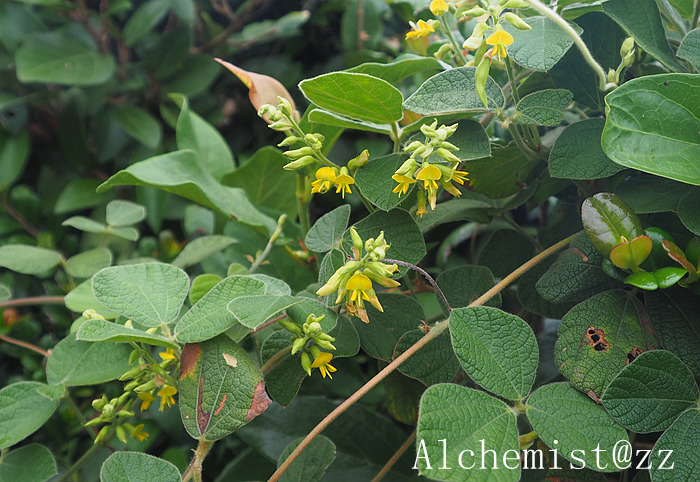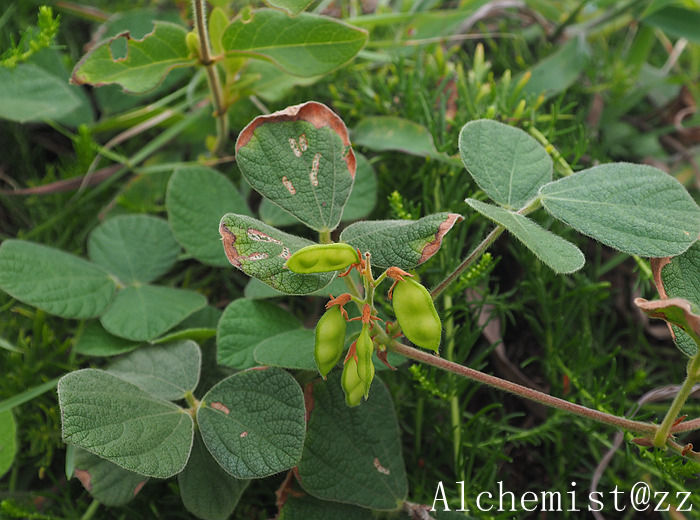鹿藿 Rhynchosia volubilis
- Scientific Name: Rhynchosia volubilis Lour.
- Ref: Fl. Cochinch.:460. 1790
- Chinese Common Name: 鹿藿 lùhuò, 老鼠眼 lǎoshǔ∙yǎn
- Japanese Common Name: タンキリマメ [痰切豆] tankirimame
- Family: Fabaceae
- Genus: Rhynchosia
- Distribution: Mountains south of the Chang Jiang; 200-1000 m. Guangdong, Hainan, Taiwan [Japan, Korea, Vietnam].
- Photo: 09/13/2014, Is. Nanji, Zhejiang
Herbs. Stems twining, ribbed, densely gray to light yellow villous. Leaves pinnately or sometimes almost digitately 3-foliolate; stipules small, lanceolate, 3-5 mm, pubescent; petiole 2-5.5 cm; petiolules 2-4 mm; leaflets papery; terminal leaflet rhomboid or obovate-rhomboid, 3-8 × 3-5.5 cm, both surfaces gray or light yellow villous, with yellow-brown sessile glands, basal veins 3, base rounded or broadly cuneate, apex obtuse or acute, usually mucronate; lateral leaflets smaller, usually oblique. Racemes 1-3 per axil, 1.5-4 cm; peduncle ca. 2 mm. Flowers ca. 1 cm, slightly clustered. Calyx campanulate, ca. 5 mm; lobes lanceolate, exterior pubescent and with glands. Corolla yellow; standard subcircular, with wide and inflexed auricles; wings obovate-oblong, base with 1 long auricle at one side; keels beaked. Ovary hairy, with clustered glands. Legume reddish purple, oblong, 1-1.5 × ca. 0.8 cm, extremely compressed, slightly constricted between seeds, sparsely hairy to almost glabrous, apex with small beak. Seeds usually 2, black, lustrous, elliptic or subreniform. Fl. May-Aug, fr. Sep-Dec. 2n = 22. (Flora of China)

09/13/2014, Is. Nanji, Zhejiang
